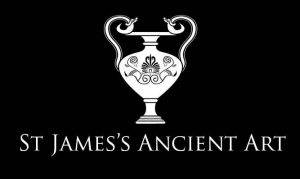Terracotta moulded figures of people and animals were meant to be grave goods to be placed in tombs. It was believed that these figures would serve and assist the deceased in the afterlife. Figures of this type are called mingqi in Chinese, and usually depict servants, officials, soldiers, musicians, court attendants, dancers and, in the case of animals, horses and Bactrian camels. As in life, attendant figures were supposed to stay nearby their master, waiting to fulfil the desires and needs of the deceased. They were lined outside the tomb before the coffin was taken inside, and then placed and arranged inside the tomb. The size and number of the figures in a grave depended on the rank of the deceased. The Northern Wei Dynasty carried on reforms which contributed greatly to an amalgamation of art and culture in sixth-century China. This was manifested in painting, calligraphy, the funerary and decorative arts, and in the style of the cave-temples at Longmen in the Henan Province. During the Northern Wei dynasty rule Northern China was unified and Buddhism was introduced to China – an introduction which rooted itself firmly in the cultural fabric of China.
Wei Dynasty Seated Lady
£ 225.00
A Chinese Northern Wei terracotta statuette of a seated female, possibly a member of the domestic household staff. She is portrayed wearing a long tunic, with her right knee brought up to chest and bent, supporting her right arm, while the left leg is crooked beneath the body. The figure’s hair is arranged in a bun on top of her head. Traces of black, white and red colour are still visible on the surface.
Period: Northen Wei Dynasty
Condition: Fine, intact and complete. Traces of the original pigmentation present on the item's surface.
SOLD
| Dimensions | H 13 cm |
|---|---|
| Pottery | Terracotta |
| Region | East Asia (Far East) |



